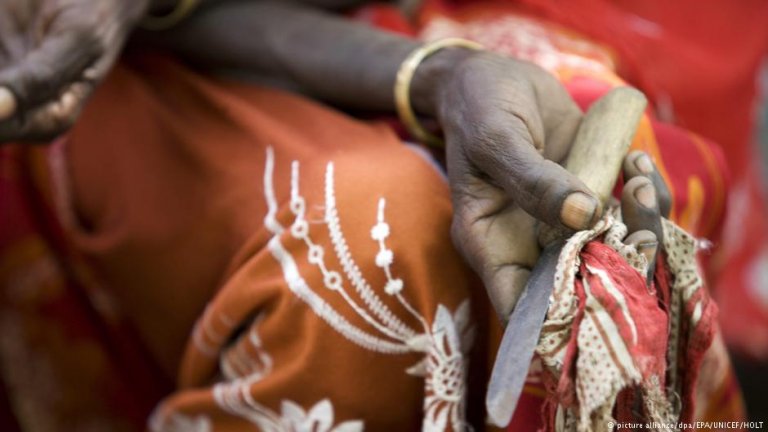

World Health Organization W.H.O defines female genital mutilation or cutting, FGM, as the partial or total removal of the female external genitalia or injury to the female genital organs for non- medical reasons.
Female genital cutting is mostly carried out on young girls between infancy and age fifteen.
The practice is prevalent in Nigeria, Egypt, Mali, Eritrea, Sudan, Central Africa Republic and northern part of Ghana with the highest prevalence rates in Somalia and Djibouti where FGM is virtually the norm.
Female genital cutting is not without consequences which can be short or long term, the short term include severe pain, shock caused by pain, excessive bleeding, difficulty in passing urine and faeces, infections like tetanus and death.
Long term include cysts, complications in child birth, traumatic stress disorder, psycho-sexual problem, increased risk of new born deaths and vaginal problems which include painful menstrual blood scar tissue and keloids.
As a result of the effects of female genital cutting, the United Nations General Assembly designated February sixth as the International Day of Zero Tolerance for Female Genital Mutilation.
The day is to amplify and direct efforts on the elimination of this harmful practice.
Though, the practice has been in existence for more than a thousand years, hence might be difficult to end in a single generation.
Theme for this year is no time for global inaction, unite, fund, and act to end female genital mutilation.
The theme emphasized the need for global solution to the scourge that FGM has become and the need to collaborate and work together with stakeholders to end the practice of FGM in the communities.
Since 2008, the United Nations Fund for Population, UNFPA in partnership with United Nations International Children’s Emergency Fund, UNICEF, had been at the fore front of eliminating female genital mutilation.
Commendably, the programme has seen significant achievements; for instance, over three million girls and women have benefited from female genital mutilation related protection and care services.
Also, thirteen countries have established legal frameworks for banning female genital mutilation and have established national budget lines funding programmes to address it.
Despite all these, female genital mutilation is still prevalent in some countries.
The sustainable development goals in 2015 called for an end to fgm by 2030 as stipulated in its sustainable development goal five as such is imperative for all countries where fgm is practiced to key into it.
It is worth mentioning that former president dr. Goodluck Jonathan in 2015 signed a federal law banning female genital mutilation.
Though, the practice has reduced, machineries must be put in place for its total eradication.
Titilayo Kupoliyi